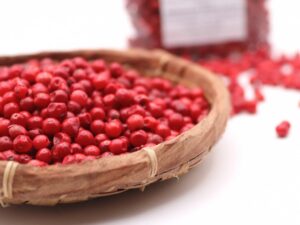
Homemade gingerbread: Recipe and history

Gingerbread: a thousand-year-old tradition
1. A history between East and Europe
Long before it became a symbol of the festive season, gingerbread had its origins in ancient China, where a spice-scented honey bread called mi-kong was already being eaten.
It wasn’t until the Middle Ages that the recipe reached Europe, thanks in particular to trade with the Arab world. In France, it was in Reims and Dijon that gingerbread made its mark from the 15th century onwards, with each region developing its own variant.
The secret? Honey as the only sugar, spices from elsewhere – cinnamon, cloves, ginger, nutmeg, star anise – and a slow cooking process that concentrates the aromas.
2. Benefits and virtues of gingerbread

The nutritional and well-being information presented in this article is based on traditional practices and studies currently available. It is not a substitute for personalized medical or nutritional care. Before including any new food or supplement in your diet, always seek the advice of a healthcare professional.
Beyond its comforting fragrance, each spice has its own benefits:
Cinnamon: stimulates circulation, warms and balances blood sugar levels.
Ginger: natural energizer, excellent for digestion.
Star anise: soothes bloating and eases breathing.
Clove: antibacterial and powerful natural antiseptic.
Nutmeg: relaxing and slightly euphoric.
A real concentrate of interior warmth
3. Traditional gingerbread recipe (old version)

Ingredients:
250 g honey (ideally forest or mountain honey)
250 g rye flour
10 cl warm milk
1 tsp. baking soda
1 tsp. powdered cinnamon
½ tsp. ginger
½ tsp ground star anise
¼ tsp. grated nutmeg
1 pinch ground cloves
(Optional: a few candied orange peels for a festive touch)
Preparation:
1. Gently heat honey until fluid.
2. Mix flour, baking soda and spices in a bowl.
3. Add hot honey and warm milk. Stir until smooth.
4. Pour into a buttered mould and leave to rest for 24 hours (an ancient tradition: this allows the flavours to develop).
5. Bake at 150°C for 1h to 1h10.
6. Leave to cool, then wrap in a cloth and wait 2 days before tasting.
The bread becomes softer and more fragrant over time.
4. Conclusion
Gingerbread is much more than a cake: it’s a cultural heritage, a celebration of human warmth and know-how handed down over the centuries.
Make it at home, share it, and enjoy a moment suspended between tradition and sweetness.



